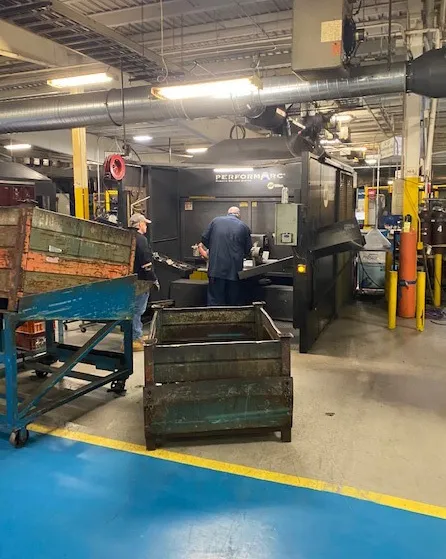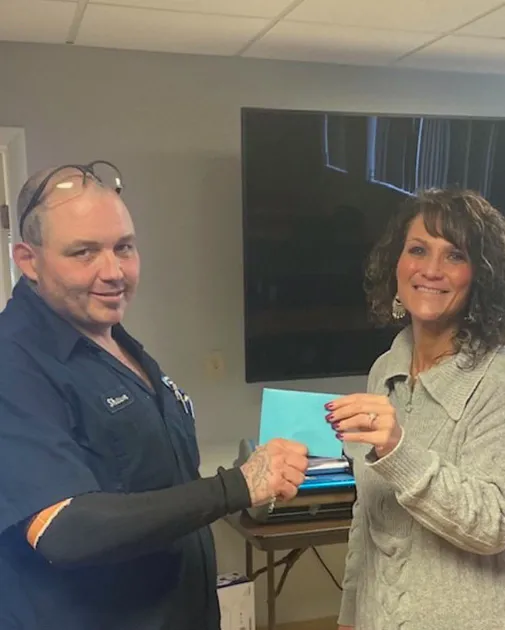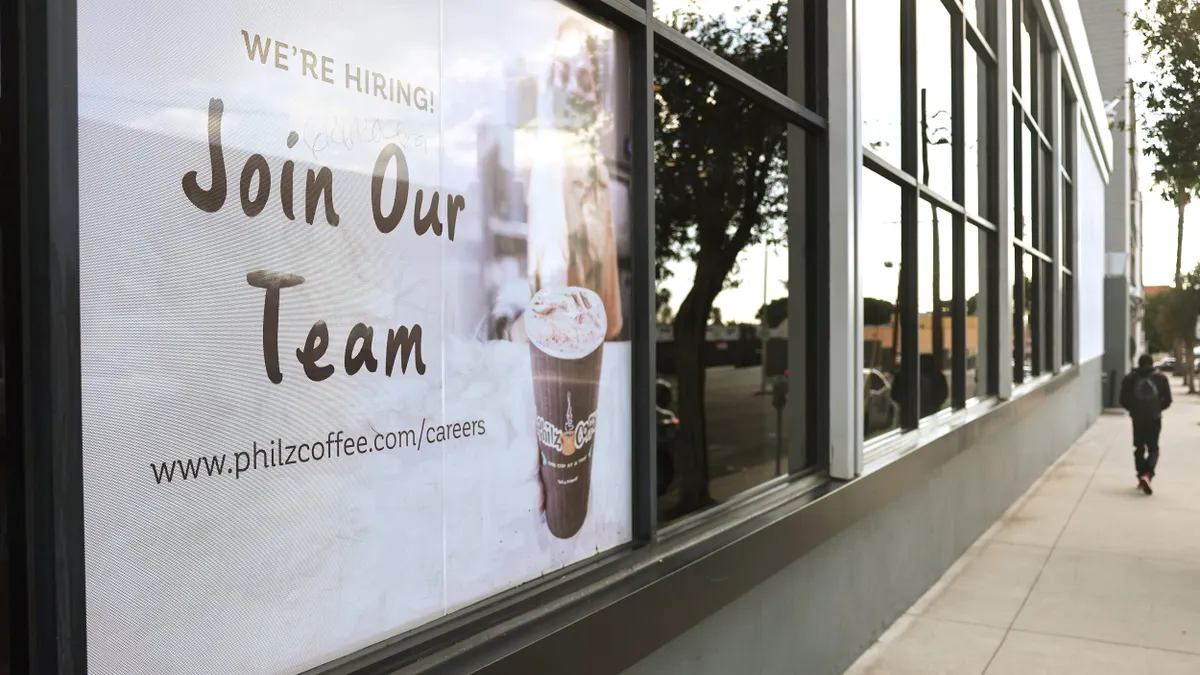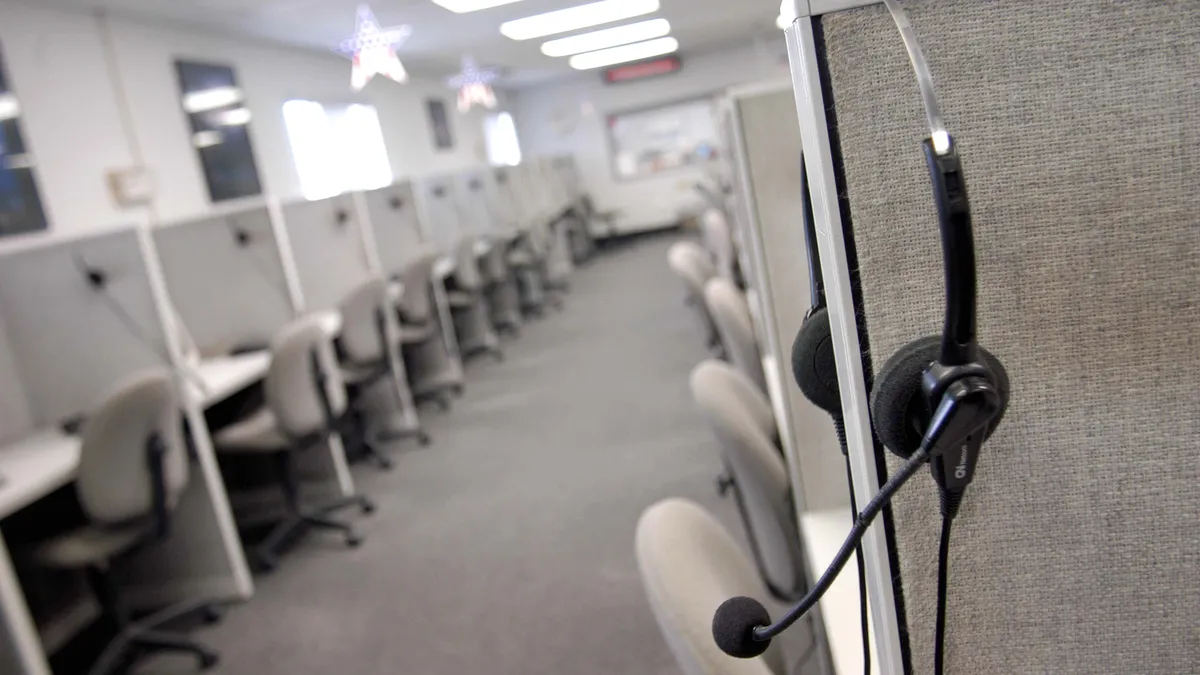John Bush has worked for years to connect people sentenced in the criminal justice system with employers.
Calling up local businesses, the Delaware County, Indiana, probation officer would ask, “Hey can you give my guy a chance?”
To which he said companies often tentatively answered, “'Well, I guess. We’re not supposed to hire someone with a felony, but we’ll go ahead and do it. And see how he does.'”
Despite the initial trepidation Bush received from employers, the majority of placements proved successful, with many individuals still working at those companies today.
In January, Bush took that work a step further and launched the Judicial Users Manufacturing Partnership (Jump).
The program aims to reduce recidivism by helping justice-involved individuals, including those with felonies and misdemeanors, enter the local manufacturing workforce.
Challenges filling manufacturing jobs amid a nationwide push to grow the industry have led more companies to engage often overlooked talent — and manufacturers in Muncie, Indiana, are no exception.
“You’re seeing the upcoming crisis with manufacturers of their population aging out, and they’re not getting that new talent," Bush said.

The search for new talent proved to be an opportunity for Bush. When local manufacturers caught wind of Bush’s efforts, they invited him to speak at a Muncie Manufacturing Alliance meeting about bringing justice-involved individuals into their workforces.
From there, Bush talked with Ivy Tech Community College about involving the school as an education partner and a Jump program pilot was presented in April 2022.
“We are trying to generate at least entry-level folks to come in and begin that cycle again of commitment to where they make it a career,” Bush said of the program. “When you’re dealing with just antiquated hiring policies, for employers that discriminate or alienate individuals with a background, they eliminate opportunities.”
People with convictions often face barriers to employment. A 2018 study in the Quarterly Journal of Economics found that employers who asked about criminal records were 63% more likely to call applicants with no record compared to those with them, often due to concerns about recidivism and gaps in work experience.
Acting on Jump’s goal to reduce barriers for justice-involved individuals, twenty-three companies from manufacturing sectors such as aerospace, plastics and automotive signed onto the program to help fill over 400 jobs in the county. Within its first 60 days, more than a quarter of open positions were filled, according to Bush.
“If we go at this rate, we might be able to meet the labor shortage in Delaware County just by this program,” Bush said.
One manufacturer working as a Jump partner is Mursix, which produces parts for sectors including automotive, medical and industrial markets. As of March 3, the company had hired five associates to work in its stamping, assembly and shipping departments, said Human Resources Manager Corbin Black.
“Employers should think about joining this,” Corbin Black said. “People and the needs of the workforce have changed. If an employer is not trying to be on the forefront of the current issues, demographics and trends, then their business will not survive.”
The program has seen such success that it expanded this spring. Jump, now called the Judicial Upward Mobility Partnerships, is collaborating with sectors outside manufacturing to help place individuals who cannot work in a factory environment, Bush said in an email.

From talent pool to pipeline
Jump participants go through a multi-step process before stepping onto the shop floor.
Candidates are required to sit for an initial interview with the Jump program coordinator or their referral agent, such as a probation officer, and complete an application process that includes a “Pre-Employment Screening Tool.” Once completed, candidates are assigned a green, yellow and red status that guides their employment.
"When you’re dealing with just antiquated hiring policies, for employers that discriminate or alienate individuals with a background, they eliminate opportunities."

John Bush
Jump Founder
Green clients will begin the onboarding process. Yellow clients are identified through risk assessment reporting and the screening tool for obstacles to employment, including transportation, drug dependency, housing or education. These clients are referred to Ivy Tech Community College and other support services to assist them while joining a workforce. Red clients will be flagged and removed from the program until they can transition back to green or yellow.
“With the wraparound services approach that these individuals are given, it can make an employer feel better about bringing someone in who may have a non-traditional background,” Corbin Black said.
Manufacturers like North American Stamping Group were quick to partner with Bush during the program’s infancy. Human Resources Director Tina Black looked to join the program after seeing the buy-in Bush had garnered from the local court system, community and businesses.
“I talked with my supervisors and some of the upper management. They thought it was a great idea,” she said. “So then, I went ahead and launched it here.”

Joining the program has helped enhance North American Stamping Group's operations, Tina Black added. One employee from Jump, Shaun Blankenship, made a significant impact on the company’s welding department by implementing new processes that have improved part failure rates by 85% to 90%.
Jump also contains an educational component offered by Ivy Tech Community College. While onboarding, participants complete Six Sigma white belt training to gain a basic understanding of manufacturing concepts.
Twenty-two-year-old program participant Joshua Pena, who is currently in his third month working as a machine operator for Magna Powertrain, said the onboarding process went quickly.
After hearing about the program from his girlfriend and her mother, Pena asked his probation officer about joining. From there, he said he was able to get in touch with program coordinator Emily Stults and within the next week, start his white belt course.
“It taught me what people would be looking for,” Pena said of the course. “When you have an understanding of how a factory works, you're able to understand what employers [are] looking for, so you're going to be able to meet those requirements.”
“With me not having worked in a factory before going over there, I was able to catch on quickly because of my course,” he added.
Pena now has plans to take more classes at Ivy Tech.
“I want to learn how to weld and go the trade route," he said.
In March, seventeen of at least 36 participants working toward their white belts also started for-credit Ivy Tech classes that can lead to a degree, said Jennifer Gaisiorek, vice chancellor for Workforce Partnerships and Strategic Communications at Ivy Tech’s Muncie campus.
Participants earn their certification, and then often want to learn more, she said.
Inclusive policies and attitudes spark positive change
Local initiatives like Jump are a first step in breaking down barriers to help justice-involved individuals chart a career path.
“There’s all sorts of benefits to hiring someone with a felony,” Bush said. “The beauty of our program is we provide extra monitoring, oversight and information exchange.”
Many employers don’t realize that applicants with felonies qualify for the federal Work Opportunity Tax Credit, in which companies can receive tax credits just for hiring them, Bush explained.
Through the Federal Bonding Program, employers are also offered fidelity bonds up to $25,000 per person to encourage them to hire “workers considered ‘at-risk’ due to prior involvement in the criminal justice system.”
Pena said he wants companies to realize, "We're just normal people. Sometimes we had to make mistakes in order to learn to be who we are today."
"Taking a chance on somebody can be the best thing for you and for them,” he added.
That’s what Jump is helping employers to understand, Bush explained. It encourages them to look at their own policies and procedures, and shows them that “people are not always the same on paper as they are in person.”






















